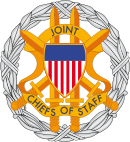
Jeremy Michael Boorda was a United States Navy admiral who served as the 25th Chief of Naval Operations. Boorda is notable as the first person to have risen from the enlisted ranks to become Chief of Naval Operations, the highest-ranking billet in the United States Navy.

The Fifth Fleet is a numbered fleet of the United States Navy. Its area of responsibility encompasses approximately 2.5 million square miles, and includes the Persian Gulf, Red Sea, Arabian Sea, and parts of the Indian Ocean. It shares a commander and headquarters with U.S. Naval Forces Central Command (NAVCENT) in Bahrain. Fifth Fleet/NAVCENT is a component command of, and reports to, U.S. Central Command (CENTCOM).
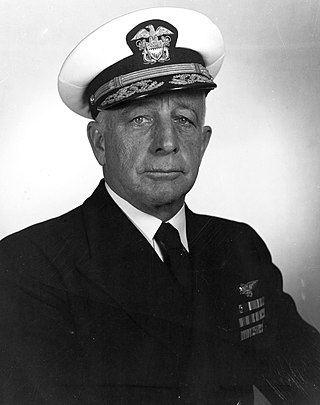
Aubrey Wray Fitch was an admiral of the United States Navy during World War II. A naval aviator, he held important aviation-related commands both at sea and on shore from the 1920s onward. He also served as superintendent of the United States Naval Academy.

Thomas Cassin Kinkaid was an admiral in the United States Navy, known for his service during World War II. He built a reputation as a "fighting admiral" in the aircraft carrier battles of 1942 and commanded the Allied forces in the Aleutian Islands Campaign. He was Commander Allied Naval Forces and the Seventh Fleet under General of the Army Douglas MacArthur in the Southwest Pacific Area, where he conducted numerous amphibious operations, and commanded an Allied fleet during the Battle of Leyte Gulf, the largest naval battle of World War II and the last naval battle between battleships in history.

Frank Benton Kelso II was an admiral of the United States Navy, who served as Chief of Naval Operations from 1990 to 1994.
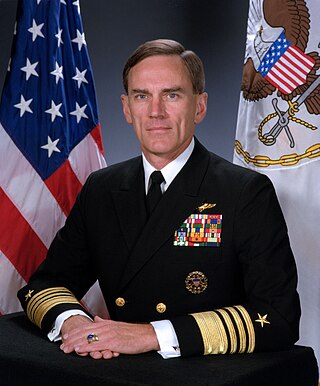
Jay Lynn Johnson is a retired United States Navy admiral who served as the 26th Chief of Naval Operations from 1996 to 2000. He was later president and chief executive officer of General Dynamics.

Michael Harold "Mike" Miller is a former Vice Admiral in the United States Navy, and was the first active-duty officer to direct the White House Military Office. He was the 61st Superintendent of the United States Naval Academy.

James Lemuel Holloway III was a United States Navy admiral and naval aviator who was decorated for his actions during World War II, the Korean War, and the Vietnam War. After the Vietnam War, he was posted to The Pentagon, where he established the Navy's Nuclear Powered Carrier Program. He served as Chief of Naval Operations from 1974 until 1978. After retiring from the Navy, Holloway served as President of the Naval Historical Foundation from 1980 to 1998 and served another ten years as its chairman until his retirement in 2008 when he became chairman emeritus. He was the author of Aircraft Carriers at War: A Personal Retrospective of Korea, Vietnam, and the Soviet Confrontation published in 2007 by the Naval Institute Press.
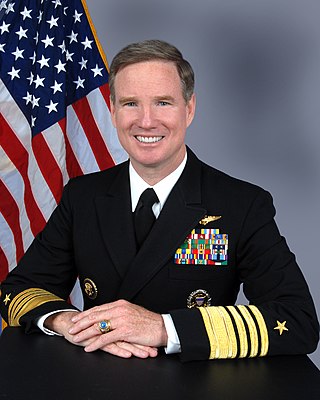
Patrick Michael Walsh is a former United States Navy four-star admiral who last served as the 59th Commander of the U.S. Pacific Fleet from September 25, 2009 to January 20, 2012. He served as the 35th Vice Chief of Naval Operations from April 5, 2007 to August 13, 2009, and as Commander of the U.S. Naval Forces Central Command and Commander, U.S. 5th Fleet from October 2005 to February 27, 2007. He retired from the Navy with over 34 years of service.

Roy Lee Johnson was a highly decorated four-star Admiral in the United States Navy. A Naval Academy graduate, he trained as Naval aviator and distinguished himself as Air Group Commander during several World War II campaigns.

United States Naval Forces Central Command (NAVCENT) is the United States Navy element of United States Central Command (USCENTCOM). Its area of responsibility includes the Red Sea, Gulf of Oman, Persian Gulf, and Arabian Sea. It consists of the United States Fifth Fleet and several other subordinate task forces, including Combined Task Force 150, Combined Task Force 158 and others.
The structure of the United States Navy consists of four main bodies: the Office of the Secretary of the Navy, the Office of the Chief of Naval Operations, the operating forces, and the Shore Establishment.

Maurice Franklin Weisner was a four-star admiral of the United States Navy who served as Vice Chief of Naval Operations from 1972 to 1973; commander in chief, United States Pacific Fleet from 1973 to 1976; and commander in chief of the United States Pacific Command from 1976 to 1979.

Robert Joseph Kelly is a retired United States Navy four star admiral who served as Commander in Chief, United States Pacific Fleet (CINCPACFLT) from 1991 to 1994.

Admiral Richard Michael Dunleavy is a retired US naval officer. He retired as a two-star rear admiral in 1992 after being demoted from the rank of three-star vice admiral as a result of the Tailhook scandal.

Samuel Perez Jr. is a retired rear admiral in the United States Navy.

Frederick Charles Turner was a highly decorated officer in the United States Navy with the rank of Vice admiral. Turner began his career as Reservist and Naval aviator during World War II and distinguished himself during Battles of Iwo Jima and Okinawa in early 1945. Following the War, Turner remained in the Navy and commanded aircraft carrier USS America during Vietnam War.

Scott Harbison Swift is a retired admiral in the United States Navy, serving as the commander of the U.S. Pacific Fleet from May 27, 2015 to May 17, 2018. He previously served as the director of Navy Staff in the office of the Chief of Naval Operations.
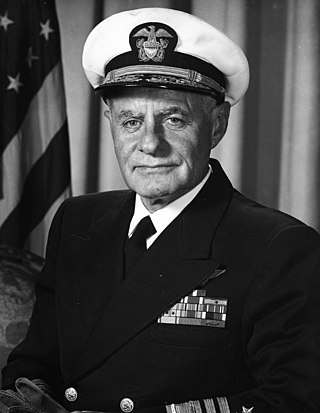
Wallace Morris Beakley was an American naval aviator, diplomat, commander of the United States Seventh Fleet, deputy chief of naval operations, and vice admiral in the United States Navy. He served as vice chief of naval operations for Atlantic Fleet and commander in chief for Western Atlantic until he retired from the U.S. uniformed services in 1964.
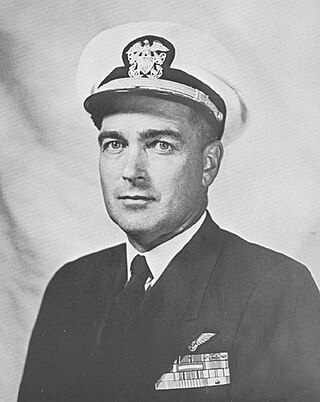
Damon Warren "Hutch" Cooper was a United States Navy Vice admiral who served in conflicts from the 1940s through the 1970s, including as the Commander, Task Force 77 during the late stages of the Vietnam War.


